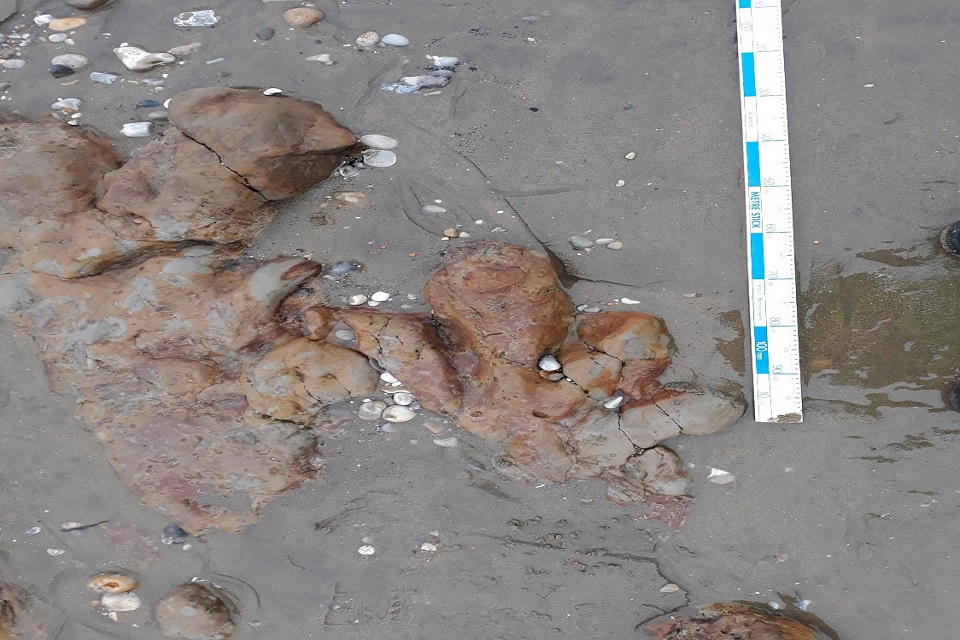
Engineers on the Isle of Wight, who are working on limiting shore erosion by the forces of the sea, have uncovered an incredible piece of history.
Dinosaur footprints from 125 million years ago were unearthed on Yaverland Beach while, during a project, the Environment Agency was assessing the ground for ways to fortify the shoreline.
Scientists believe these ancient remains could belong to a Mantellisaurus. These dinosaurs were about seven meters long and had three toes on each foot, which means they were quite unique.
Each discovery from that time period consistently reveals more secrets, according to the press release published on the UK government website.
Nick Gray, the regional manager responsible for dealing with flood and coastal risks, said, “Dinosaurs existing right where our team is working brings old and new together—the modern challenges of combatting climate change with a period of time we can only imagine.”
Mantellisaurus weighed around 750 kilograms
These Mantellisaurus fossils remained buried until excavations uncovered them practically right next to places where people normally go about their daily lives—near a cafe by the beach, a parking area, and a bus stop.
The Environment Agency brought in JBA Consulting to oversee the flood-protection project. The local Dinosaur Isle Museum’s team was also present because they had found similar markings in the area in recent years.
The holotype skeleton of Mantellisaurus atherfieldensis @NHM_London for #fossilfriday. pic.twitter.com/Fel5Y78XC1
— James Ronan (@JurassicJames1) January 27, 2023
The mantellisaurus was quite heavy, weighing around 750 kilograms, but it wasn’t the largest dinosaur around. Unlike some other types, they mainly walked on their hind legs somewhat like an ostrich, although not as fast. They would drop to all fours when they were still or moving slowly.
Dr. Martin Munt, the curator of Dinosaur Isle Museum in Sandown, revealed, “The Isle of Wight is the richest dinosaur location in Europe, but this is still a wonderful find. We have located 35 different types, and the area was once also heavy with plants, crocodiles, pterosaurs, amphibians, fish and invertebrates like insects and freshwater mussels.”
A fully-grown Mantellisaurus would have been nearly twice as long as an average car, and it moved with a slow, heavy grace, leaving behind unmistakable footprints that have endured through time, according to the press release.
Isle of Wight as the dinosaur capital of Britain
The Isle of Wight was an ideal home for dinosaurs, leading to the accumulation of a diverse array of bones and fossils over time. This treasure trove provides scientists with a wealth of items to investigate.
Stuart Noon, who is in charge of heritage at JBA Consulting, explained, “This represents a hugely important and significant discovery for the project, as finding the new footprints makes it clear that the land on which the dinosaurs walked is likely to stretch the whole length of Yaverland beach.”
The recent find solidifies the Isle of Wight’s reputation as the dinosaur capital of Britain. The rocks that reveal these ancient reptiles are called the Wessex Formation, and they are a magnet for geologists and paleontologists, as mentioned in the press release.
See all the latest news from Greece and the world at Greekreporter.com. Contact our newsroom to report an update or send your story, photos and videos. Follow GR on Google News and subscribe here to our daily email!



